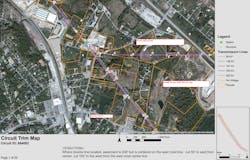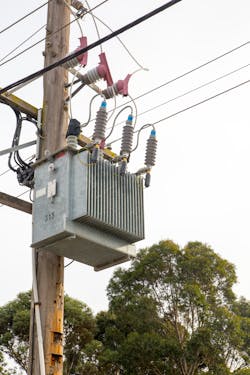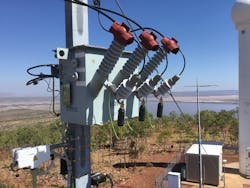Digital Tools Can Help Address Vegetation Hazards
Many power interruptions are caused by healthy trees brought down by sustained wind events located off a right-of-way. Another key source of risk is overvoltages, caused by lightning strikes and even routine switching events. These kinds of risks can be difficult to predict with human judgment alone. Fortunately, artificial intelligence (AI) and machine learning (ML) systems have reached a level of maturity that can help utilities to better assess their risk and develop targeted mitigation plans.
Landscape At Scale
Hitachi Energy introduced its Hitachi Vegetation Manager solution to do exactly that—enable utilities to assess risk and develop mitigation plans. Part of the company’s Lumada Inspection Insights portfolio, the vegetation manager analyzes data from drones, light detection and ranging (LiDAR), satellites and other visual inputs to prioritize potential areas of risk. In turn, this data enables utilities to optimize their deployment of resources, most notably field crews, which are in limited supply because of labor shortages. This solution features two native iOS-based field apps and a web-based back-office application, making it easy and intuitive to use.
“This approach leverages human insights garnered across traditional methods, which often have involved field crews inspecting the lines with paper maps or relying on data from disparate sources that has typically been kept in silos,” said Jeff Pauska, vegetation manager product director at Hitachi Energy. “What we are doing with Hitachi Vegetation Manager is bringing all this data together in one place, accessible through a single pane of glass, which unlocks a new level of intelligence in the decision and work-planning process.”
Mitigate Power Surges
Another key source of risk for T&D grids is overvoltages, most frequently caused by lightning strikes, overheating or even routine switching events. Such surges can damage electrical equipment, causing outages and prompting costly replacement of components. To address this hazard, utilities rely on surge arresters. If the overvoltage is particularly severe in terms of size or duration, the surge arresters take the brunt to protect downstream equipment. Unfortunately, in rare instances, this process can result in explosions that spread hot particles and sparks.
“In some environments, a single spark can lead to extremely destructive outcomes,” said Helena Garriga, head of power and industry components at Hitachi Energy. “Climate change is creating conditions where fire risk is increased, and so we have collaborated with our customers to find ways to avoid those sparks altogether.”
Dynamic Responses
Utilities are turning to a variety of new tools like Hitachi Energy’s vegetation manager and wireless SPU option to better assess their power grid infrastructure risks and develop targeted mitigation plans. Real-time data unlocks a new level of intelligence for utilities to better prioritize potential areas of risk and respond dynamically to protect the power grid.
Anthony Allard is executive vice president, managing director, U.S. and head of Hitachi Energy’s business in North America. Allard was most recently chief operating officer of Berkeley Energy Commercial Industrial Solutions (BECIS), a leading energy-as-a-service solution provider in Singapore. Having spent most of his career in the power sector at GE and Alstom Grid in the U.S., he has held several executive-level positions, including general manager and board member for Prolec GE Transformers in the U.S. He also was general manager for the XD|GE high-voltage products partnership and spent 10 years working for Alstom in both North America and the Americas in strategy and operations management roles.
About the Author
Anthony Allard
Anthony Allard is executive vice-president, managing director, United States and head of Hitachi ABB Power Grids' business in North America.



